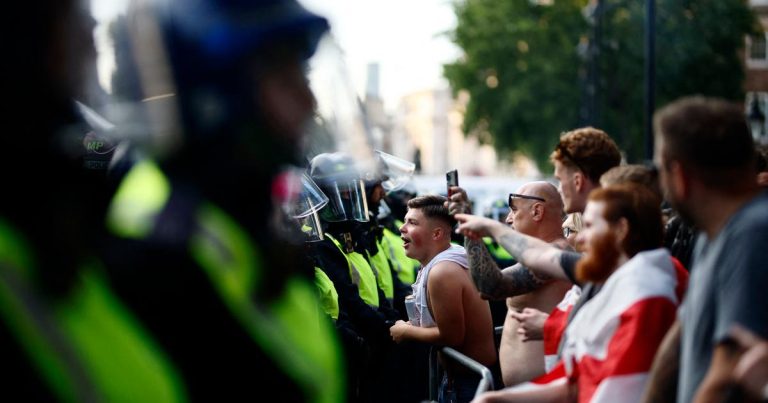Unrest in Southport: A Deeper Look at Disinformation and Violence
The UK has been gripped by a wave of far-right protests following the tragic stabbing of three children in Southport. These demonstrations, marked by violence and unrest, have ignited a heated debate about the role of disinformation in fueling social tensions. Several British news outlets, echoed by politicians and officials, have pointed fingers at Russia, alleging that Russian-linked disinformation campaigns orchestrated the chaos. While concerns about online manipulation are valid, attributing the protests solely to external forces oversimplifies a multifaceted reality.
The narrative of Russian involvement gained traction following a Daily Mail report linking a suspicious news site, Channel3 Now, to the spread of false information about the Southport stabbings. Channel3 Now published a fabricated story claiming the perpetrator was an asylum seeker on MI6’s watchlist, a narrative that quickly spread through social media, fanning the flames of anti-immigrant sentiment. This false narrative starkly contrasts with the reality: the accused is a 17-year-old British citizen. While Channel3 Now undeniably disseminated disinformation, the evidence linking it directly to Russia remains tenuous.
The Daily Mail’s investigation revealed that Channel3 Now’s YouTube channel originated as a Russian channel over a decade ago, initially featuring videos of Russian rally cars. The connection to Russia hinges on the alleged links between drivers featured in these videos and Russia’s defense and technology industries – a link that, at best, appears circumstantial. Crucially, the channel had not posted Russian-language content for eleven years, raising the possibility that it was acquired and repurposed by actors unrelated to the original creators.
Further complicating the narrative, Channel3 Now’s website, created in 2023, appears connected to Facebook pages with shared branding. These Facebook pages have a complex history of repurposing, with administrators located in Pakistan and the United States. The website itself uses a US-based company to mask its IP address, a common tactic employed by individuals and groups seeking to conceal their online identity. This intricate web of online activity makes it difficult to definitively pinpoint the source of the disinformation.
While the potential for foreign interference in online spaces cannot be dismissed, premature conclusions based on limited evidence can be counterproductive. Focusing solely on external actors risks obscuring the internal factors contributing to social unrest. Socioeconomic inequalities, political polarization, and existing prejudices within society create fertile ground for disinformation to take root and spread.
A more comprehensive approach is needed to understand the complex interplay of factors driving these protests. This includes thorough investigations into the origins and spread of disinformation, coupled with a critical examination of the social and political landscape that allows such narratives to gain traction. Addressing the root causes of social division is crucial to mitigating the impact of disinformation campaigns, regardless of their origin. Blaming external forces without acknowledging internal vulnerabilities offers a simplistic explanation for a complex problem, hindering the development of effective solutions.


